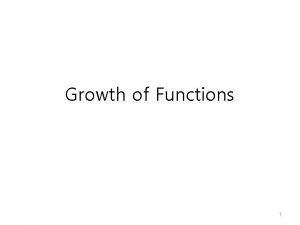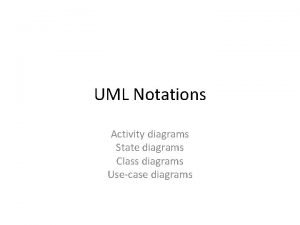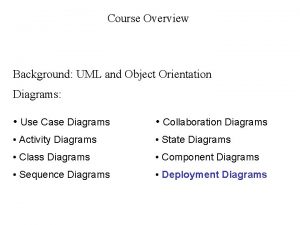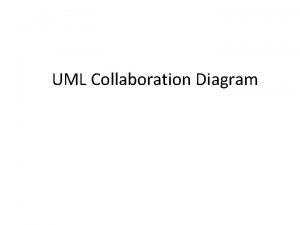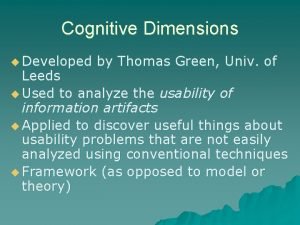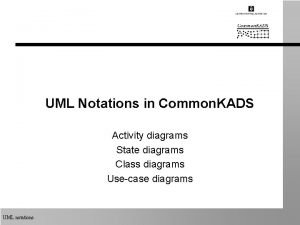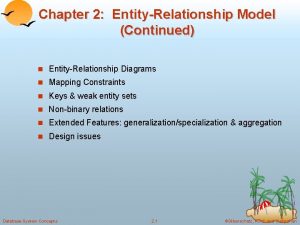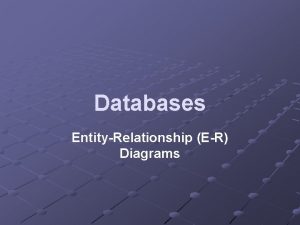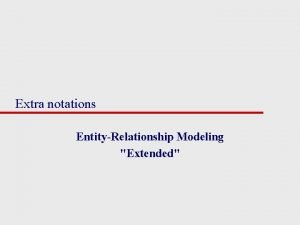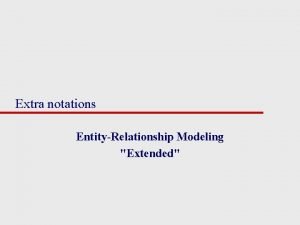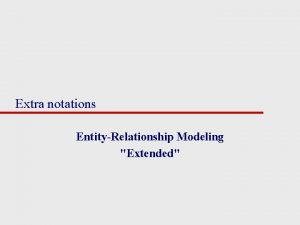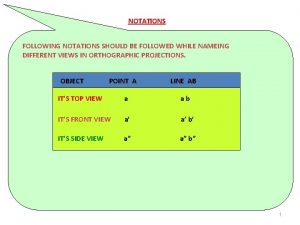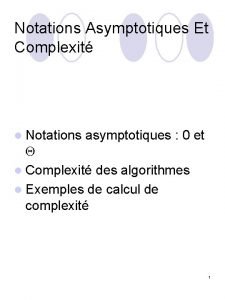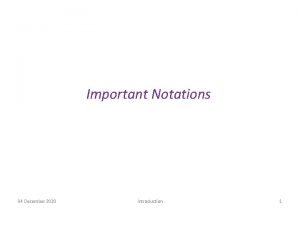CS 499 4 5 Modeling Notations EntityRelationship Diagrams











- Slides: 11

CS 499 4. 5 Modeling Notations Entity-Relationship Diagrams • A popular graphical notational paradigm for representing conceptual models • Has three core constructs – An entity: depicted as a rectangle, represents a collection of realworld objects that have common properties and behaviors – A relationship: depicted as an edge between two entities, with diamond in the middle of the edge specifying the type of relationship – An attribute: an annotation on an entity that describes data or properties associated with the entity Pfleeger and Atlee, Software Engineering: Theory and Practice

CS 499 4. 5 Modeling Notations Entity-Relationship Diagrams • Entity diagram of turnstile problem Pfleeger and Atlee, Software Engineering: Theory and Practice

CS 499 4. 5 Modeling Notations Entity-Relationship Diagrams • ER diagrams are popular because – they provide an overview of the problem to be addressed – the view is relatively stable when changes are made to the problem's requirements • ER diagram is likely to be used to model a problem early in the requirements process Pfleeger and Atlee, Software Engineering: Theory and Practice

CS 499 4. 5 Modeling Notations ER Diagrams Example: UML Class Diagram • UML (Unified Modeling Language) is a collection of notations used to document software specifications and designs • It represents a system in terms of – objects: akin to entities, organized in classes that have an inheritance hierarchy – methods: actions on the object's variables • The class diagram is the flagship model in any UML specification – A sophisticated ER diagram relating the classes (entities) in the specification Pfleeger and Atlee, Software Engineering: Theory and Practice

CS 499 4. 5 Modeling Notations UML Class Diagram of Library Problem Pfleeger and Atlee, Software Engineering: Theory and Practice

CS 499 4. 5 Modeling Notations UML Class Diagram • Attributes and operations are associated with the class rather than instances of the class • A class-scope attribute represented as an underlined attribute, is a data value that is shared by all instances of the class • A class-scope operation written as underlined operation, is an operation performed by the abstract class rather than by class instances • An association, marked as a line between two classes, indicates a relationship between classes' entities Pfleeger and Atlee, Software Engineering: Theory and Practice

CS 499 4. 5 Modeling Notations Data-Flow Diagrams • ER diagram, event trace, state machines depict only lower-level behaviors • A data-flow diagram (DFD) models functionality and the flow of data from one function to another – – A buble represents a process An arrow represents data flow A data store: a formal repository or database of information Rectangles represent actors: entities that provide input data or receive the output result Pfleeger and Atlee, Software Engineering: Theory and Practice

CS 499 4. 5 Modeling Notations Data-Flow Diagrams • A high-level data-flow diagram for the library problem Pfleeger and Atlee, Software Engineering: Theory and Practice

CS 499 4. 5 Modeling Notations Data-Flow Diagrams • Advantage: – Provides an intuitive model of a proposed system's high-level functionality and of the data dependencies among various processes • Disadvantage: – Can be aggravatingly ambiguous to a software developer who is less familiar with the problem being modeled Pfleeger and Atlee, Software Engineering: Theory and Practice

CS 499 4. 5 Modeling Notations Data-Flow Diagrams Example: Use Cases • Components – A large box: system boundary – Stick figures outside the box: actors, both human and systems – Each oval inside the box: a use case that represents some major required functionality and its variant – A line between an actor and use case: the actor participates in the use case • Use cases do not model all the tasks, instead they are used to specify user views of essential system behavior Pfleeger and Atlee, Software Engineering: Theory and Practice

CS 499 4. 5 Modeling Notations Use Cases • Library use cases including borrowing a book, returning a borrowed book, and paying a library fine Pfleeger and Atlee, Software Engineering: Theory and Practice
 Helen erickson biography
Helen erickson biography Dimensional modeling vs relational modeling
Dimensional modeling vs relational modeling Standard notations and common functions
Standard notations and common functions Running records accuracy rate
Running records accuracy rate Uml activity diagram notation
Uml activity diagram notation Deployment diagram notations
Deployment diagram notations Postfix to infix
Postfix to infix Ssd uml
Ssd uml Cognitive dimensions of notations
Cognitive dimensions of notations Scientific to engineering notation
Scientific to engineering notation Class diagram notations
Class diagram notations Rake symbol in activity diagram
Rake symbol in activity diagram


